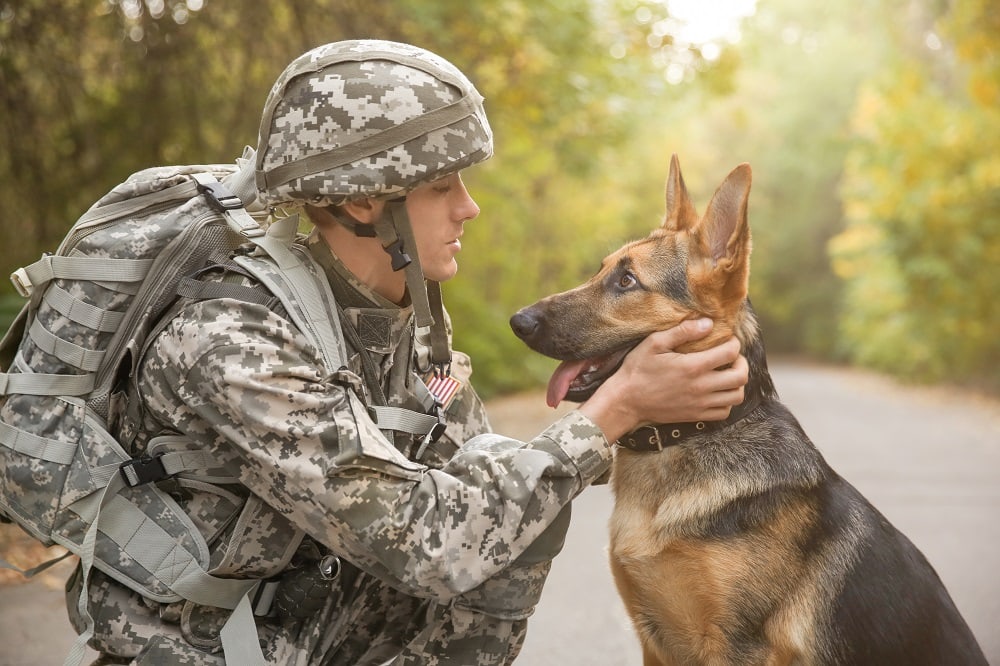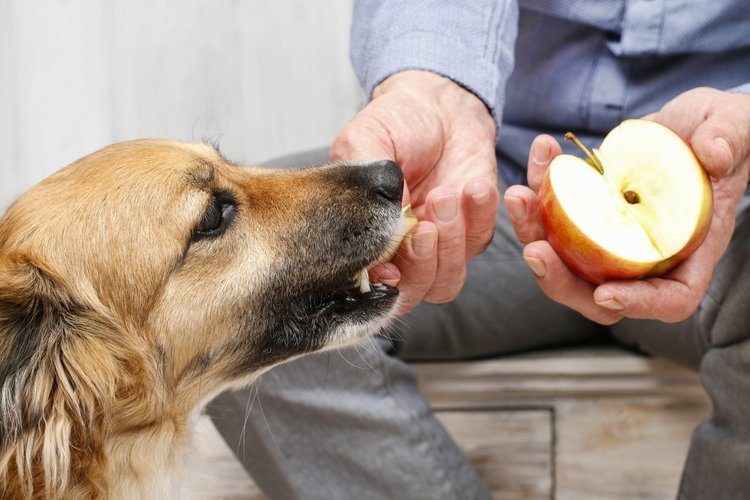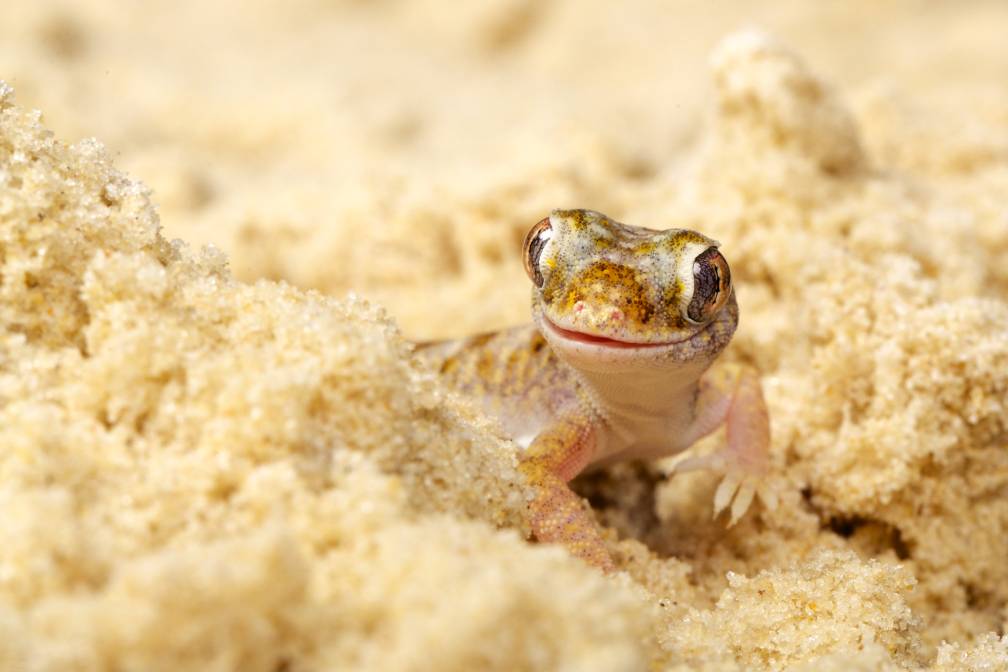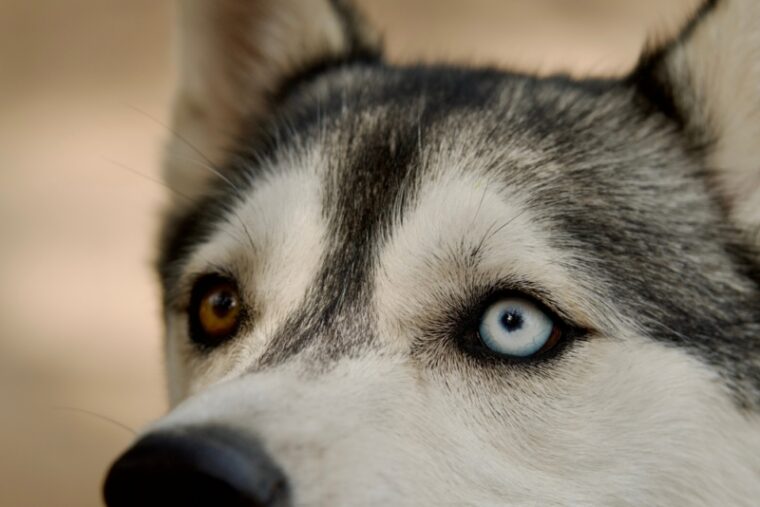
Click to Skip Ahead
Heterochromia is a unique trait in which an animal has two different colored eyes — typically, one blue and one brown.
The most common animals with this condition are cats and dogs. Here, we go over the most common dog and cat breeds that tend to be odd eyed and how the trait occurs.
The 8 Dog Breeds With Heterochromia
1. Australian Cattle Dog

The Australian Cattle Dog is a striking and intelligent working dog from Australia. They are descendants of Dingoes, which are wild dogs native to Australia.
They were crossed with Collies, and the offspring were eventually crossed with Dalmatians. The result is an excellent breed with a unique coat and occasional heterochromia.
2. Australian Shepherd
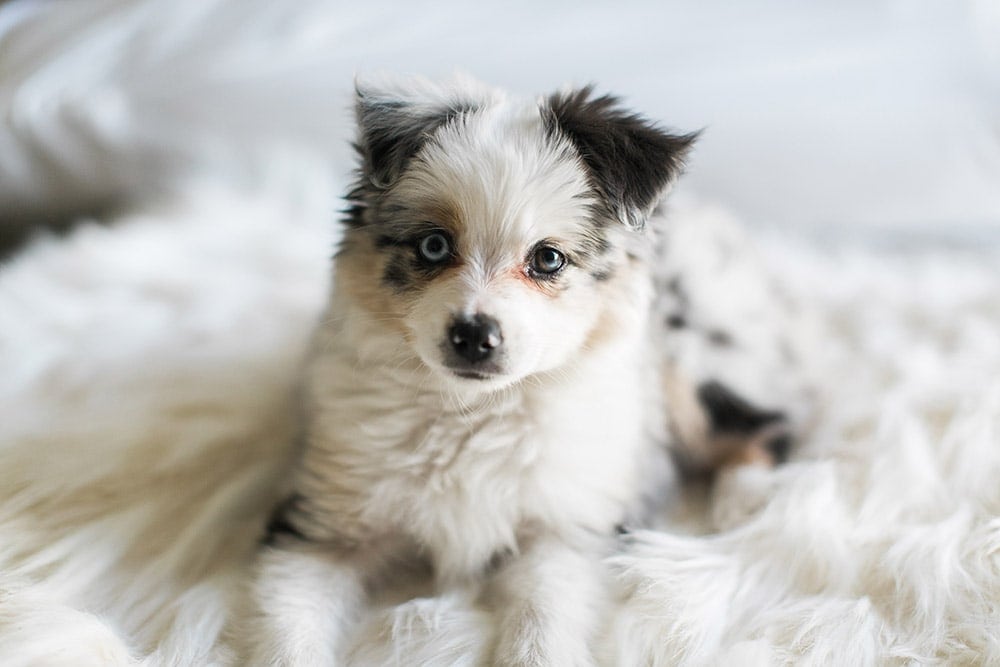
The Australian Shepherd, or Aussies, should actually be called the American Shepherd. While they originally came from British herding dogs, they were refined in the United States into the Australian Shepherd that we all know and love.
It’s quite typical for Aussies to have different colored eyes. The merle pattern is common to this breed, and heterochromia is common in dogs with merle-colored coats.
3. Border Collie
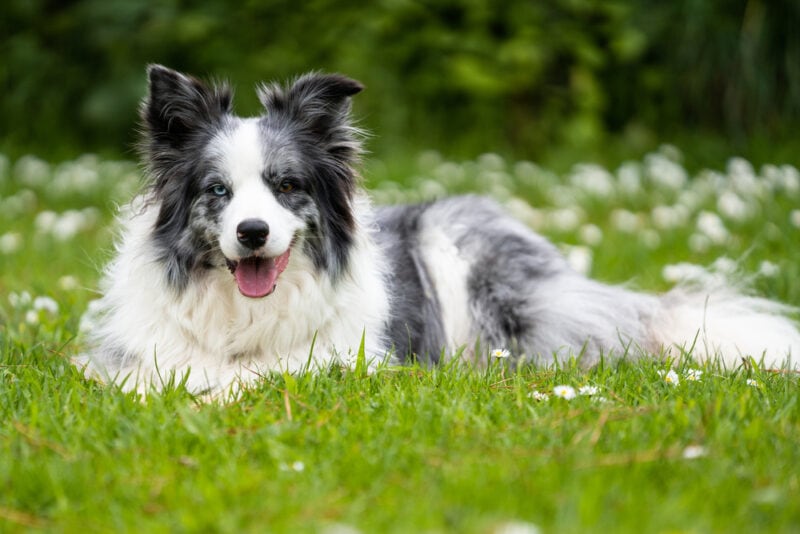
Border Collies originated in Scotland along the English and Scottish border and are known to be the most intelligent dog breed. They’re famous for their shepherding skills (they were even featured in the movie “Babe”).
They are most commonly seen with a black-and-white coat but can also be found in merle. The merle and possibly the white color on their faces can make them have heterochromia.
4. Dachshund
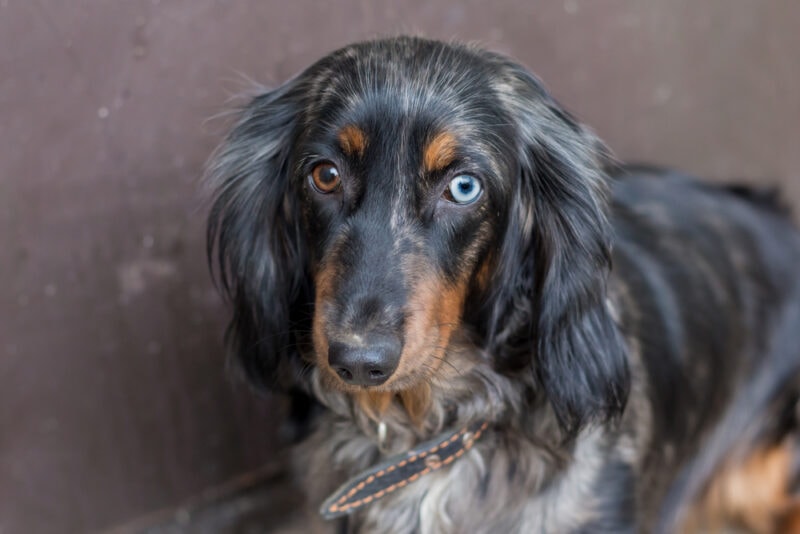
The Dachshund is sometimes fondly called the wiener dog, but the English translation of Dachshund is actually “badger dog.” They originated in Germany hundreds of years ago, and as cute as they are, they are fierce little dogs.
This friendly breed occasionally presents different colored eyes.
5. Dalmatian

Due to their eye-catching coats, the Dalmatian, or Dal, almost doesn’t need an introduction! Dals and fire engines go hand-in-hand due to their unique job as coach dogs in the 1800s.
It’s believed that heterochromia is most common in breeds with white, merle, or dappled coloring on their heads, which should explain why this breed is prone to it.
6. Great Dane

A German dog, the Great Dane, is a large breed and was used for hunting boars. Many small dogs are large dogs in their hearts and heads, and the Great Dane is a huge dog that thinks that they’re small.
They come in quite a range of colors and patterns, but they can be merle and harlequin, so you can definitely catch this breed with heterochromia.
7. Shetland Sheepdog
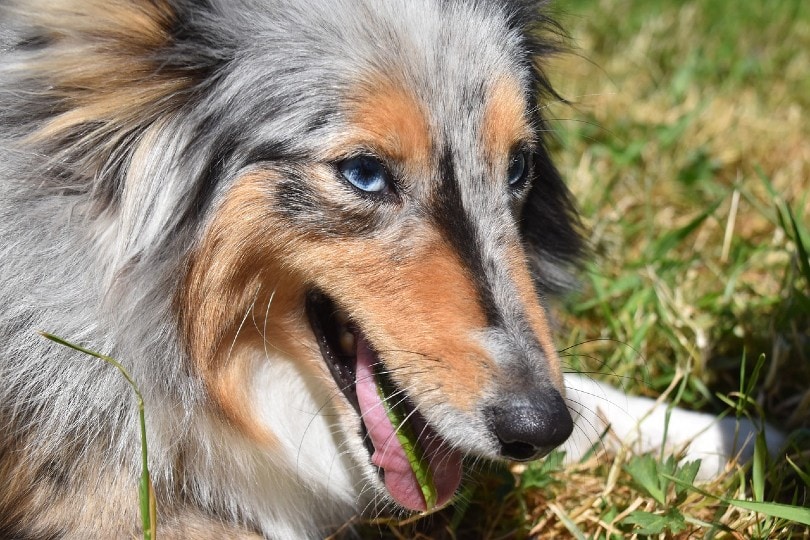
Shetland Sheepdogs, otherwise known as Shelties, hail from the Shetland Islands in Scotland. These compact-sized Collie-lookalike breeds were bred to be herding dogs but weren’t recognized until the early 1900s.
Shelties come in various different patterns and colors, including blue and sable merle.
8. Siberian Husky

Siberian Huskies have been around for ages, but they didn’t catch the world’s attention until the early 1900s, thanks to famous Husky Balto.
There’s no question that a Husky is quite the character if you’ve ever spent time watching videos of Huskies on social media! Regardless, they are a strong breed that commonly has different colored eyes.
The 8 Cat Breeds With Heterochromia
9. Cornish Rex

The Cornish Rex is a unique-looking cat that originated in Cornwall, England. They almost became extinct in the 1950s and ‘60s but were mixed with other breeds, like the Siamese, Russian Blues, and British and American Shorthairs.
This breed comes in all colors and patterns, and since heterochromia tends to occur most often in cats with white coats, this could explain why the Cornish Rex is prone to it.
10. Devon Rex

The Devon Rex is a unique-looking cat from Devon, England. The breed started with a feral tom that happened to have a curly coat. The first Devon Rex was named Kirlee, and all Devons today can be traced back to this first one.
Like the Cornish Rex, Devons come in all colors and patterns, so they are just as likely to be odd-eyed.
11. Khao Manee
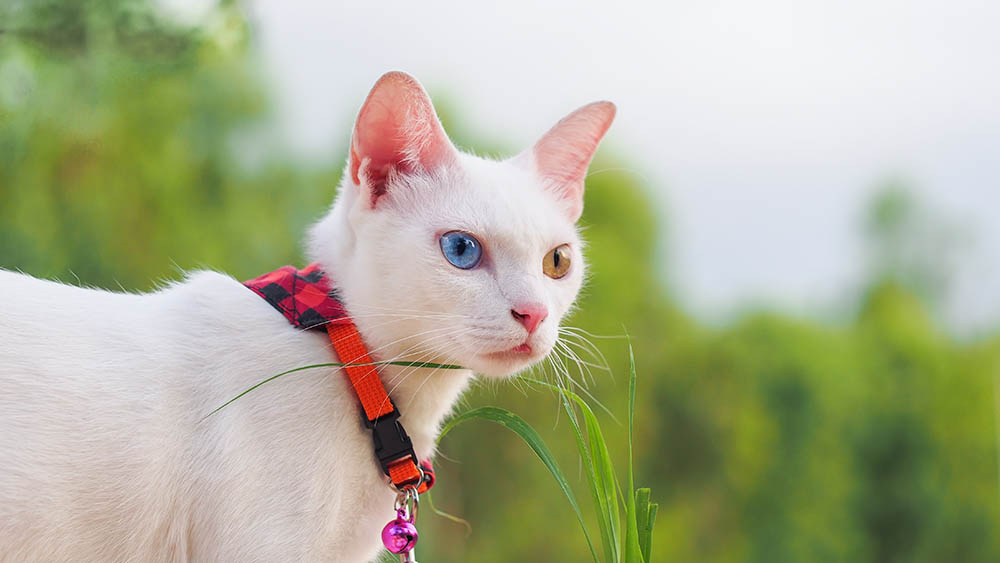
The Khao Manee (pronounced “cow man-ee”) is from Thailand but is quite rare outside its home country.
They are often called the “diamond eye cat” because of their beautiful jewel-colored eyes, which are usually green, blue, gold, or odd-eyed. They are also all-white cats.
12. Persian

Persian cats are among the oldest breed of cats, but they gained in popularity in the 1800s when Queen Victoria and other royalty fell in love with them. They also became quite popular when they were introduced in the U.S. at the end of the 1800s.
Persians come in quite a wide variety of patterns and colors, and since they can be a solid white, they are also prone to being odd eyed.
13. Scottish Fold

The Scottish Fold is from Scotland, and the first one was called Susie, a barn cat. Just like Devon Rexes, all Scottish Folds today can be traced to Susie.
They can be long or shorthaired and come in a large variety of colors, including white.
14. Sphynx
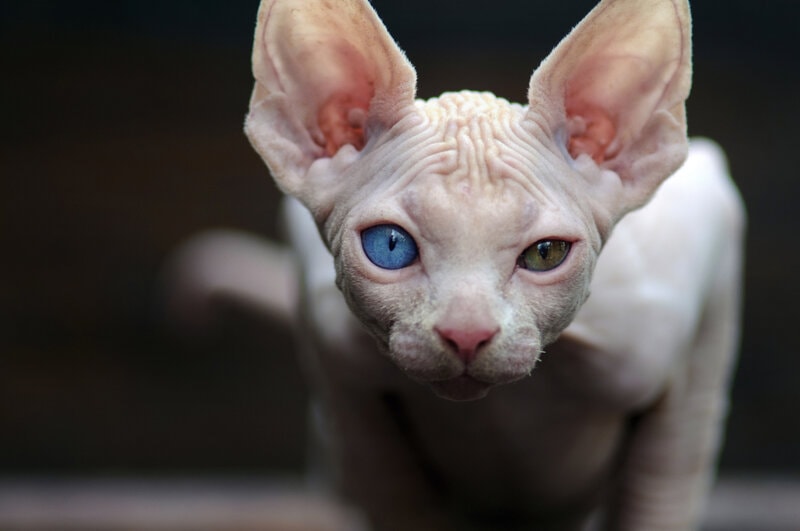
The first thing that you might think regarding the Sphynx cat is that they’re named after the Sphinx from Egypt. They are, but these cats were born and bred in Toronto, Ontario, Canada. The first one was aptly named Prune.
The Sphynx was crossbred with the Devon Rex, so they are considered “kissing cousins.” It might sound strange to say that they come in every color and pattern since they are hairless, but it’s true.
15. Turkish Angora

The Turkish Angora is a Turkish breed from ancient Angora (now called Ankara). The Turkish Angora was considered a national treasure of Turkey, so the Ankara Zoo established a breeding program.
While this breed does come in other colors, they are primarily white and were bred for their blue, gold, and odd eyes.
16. Turkish Van

The Turkish Van is believed to have been around the Eastern Anatolian region since medieval times. Two English tourists were given a male and female kitten that they brought back to England. They were bred there and given championship status by TICA in 1979.
These cats are predominantly white but also have dark coloring on the head and sometimes, the back of the neck and tail.
Do Other Animals Have Heterochromia?
Beyond cats and dogs, other animals can have different colored eyes, including the arctic fox, horses, cows, and even humans.
What Causes Heterochromia?
Heterochromia is essentially a lack of pigment that can affect part or all of one eye. The iris is the part of the eye that has color. The color is determined by pigment, also known as melanin.
Heterochromia is typically genetic, and certain coat patterns, like merle, dappled, and white (particularly white on the face) can all cause heterochromia.
But there are also cases where the animal can have acquired heterochromia from a physical injury, inflammatory conditions, or certain medications.
Are There Any Health Risks?
Unless the animal got heterochromia due to a medical condition or injury, different-colored eyes don’t necessarily predispose animals to health problems.
That said, white cats with one or two blue eyes are more likely to have congenital deafness. Cats with one blue eye are more likely to be deaf in the ear on the same side as the blue eye, and cats with a different colored coat but one blue eye are less likely to be born deaf.
The majority of blue-eyed or odd-eyed dogs have no issues with blindness or deafness. Dalmatians are the only breed with a slightly higher chance of deafness with heterochromia.
Conclusion
These are eight cat and eight dog breeds that are all more likely to be born with heterochromia. But these aren’t the only breeds. The predisposition for odd-colored eyes is based on the coat color and certain patterns.
If your pet has a sudden eye color change or seems to be experiencing discomfort in their eyes, take them to the vet as soon as possible. There are certain eye conditions that can change an animal’s eye color and aren’t related to heterochromia (such as glaucoma and cataracts).
Overall, though, if you have a cat or dog with different colored eyes and they’re healthy, count yourself lucky for having such a beautiful and unique family member!
Featured Image Credit: J. Photos, Shutterstock






